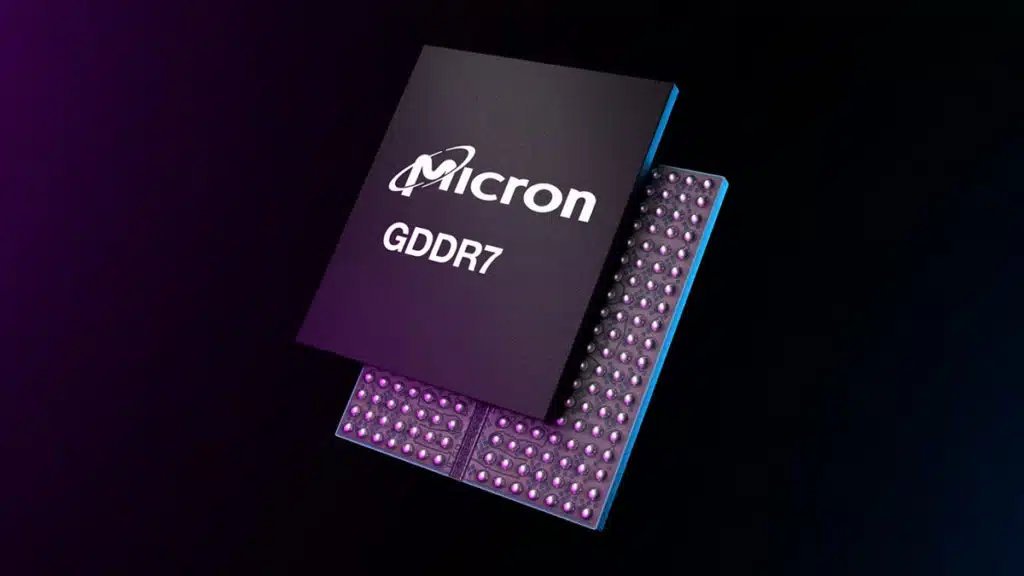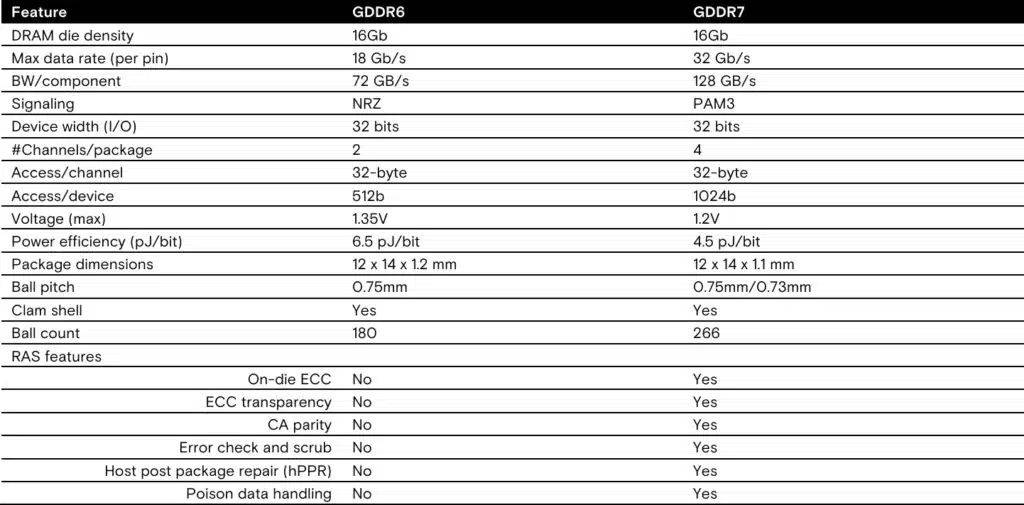The NVIDIA GeForce RTX 50 Series, a new generation of GPUs from green team that is expected to leverage next-gen GDDR7 graphics memory, will deliver more than a 30% improvement in FPS for ray tracing and rasterization versus GDDR6 and GDDR6X across 1080p, 1440, and 4K resolutions, according to memory giant Micron Technology, which announced this week that it had begun sampling next-gen graphics memory for gaming and AI. Micron confirmed that GDDR7 delivers 32 Gb/s high-performance memory in a power-optimized design, with over 1.5 TB/s of system bandwidth—a figure that would indicate up to 60% higher bandwidth than GDDR6.
Performance figures from Micron:
- 60% higher bandwidth than GDDR6, with greater than 1.5 TB/s system bandwidth (GDDR7 at 32 Gb/s and GDDR6 at 20 Gb/s).
- Micron GDDR7 has greater than 50% improvement in power efficiency over GDDR6 along with new sleep modes to reduce standby power up to 70%.
- Reduced response times up to 20% for inference workloads such as generative AI text to image generation.
GDDR6 and GDDR7 compared, per Micron:
Micron on what is helping enable this new level of performance:
If we cannot run the clock any faster for graphics memory, how does GDDR7 break through to deliver such outstanding performance? Higher frames per second, reduced processing time and increased throughput are all possible thanks to the innovative technology that powers GDDR7: multilevel signaling. With the foundation already created by Micron’s pioneering work in implementing PAM4 (pulse-amplitude modulation with four signals) on GDDR6X, the DRAM industry was able to further scale the next generation of GDDR by continuing to explore multilevel signaling techniques. GDDR7 is the first DRAM device to feature PAM3 signaling (with three signals), a technique that allows for higher data transmission rates, improving memory bandwidth and overall system performance.


